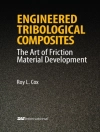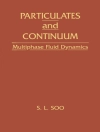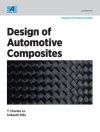The series
Topics in Current Chemistry Collections presents critical reviews from the journal
Topics in Current Chemistry organized in topical volumes. The scope of coverage is all areas of chemical science including the interfaces with related disciplines such as biology, medicine and materials science. The goal of each thematic volume is to give the non-specialist reader, whether in academia or industry, a comprehensive insight into an area where new research is emerging which is of interest to a larger scientific audience.
Each review within the volume critically surveys one aspect of that topic and places it within the context of the volume as a whole. The most significant developments of the last 5 to 10 years are presented using selected examples to illustrate the principles discussed. The coverage is not intended to be an exhaustive summary of the field or include large quantities of data, but should rather be conceptual, concentrating on the methodological thinking that will allow the non-specialist reader to understand the information presented. Contributions also offer an outlook on potential future developments in the field.
The chapter ‘Aggregation-Induced Emission In Electrochemiluminescence: Advances and Perspectives’ is available open access under a CC BY 4.0 License via link.springer.com.
สารบัญ
Modulation of Aggregation-Induced Emission by Excitation Energy Transfer: Design and Application.- Recent Advances in Clusteroluminescence.- Aggregation-Induced Emission in Electrochemiluminescence: Advances and Perspectives.- Mechanoluminescent with Aggregation-induced emission (AIE) characteristic: A perspective with applying isotropic and anisotropic force.- Recent trends on design, synthesis, spectroscopic behaviour and applications of benzazole-based molecules with solid-state luminescence enhancement properties.- Status and prospects of aggregation-induced emission materials in organic optoelectronic devices.- Aggregation Induced Emission: from small molecules to polymers. Historical background, mechanisms and photophysics.- Aggregation-induced emission fluorescent gels: Current trends and future perspectives.- Functional Polymer Systems with Aggregation-Induced Emission and Stimuli Responses.- Enzyme Responsive Peptide-Based AIE Bioprobes.- Imaging, Identification and Inhibition of Microorganisms Using AIEgens.
เกี่ยวกับผู้แต่ง
Professor Ben Zhong Tang received his bachelor and Ph.D. degrees from South China University and Technology and Kyoto University in 1982 and 1988, respectively. He conducted his postdoctoral work at University of Toronto in 1989–1994. He joined HKUST in 1994 and was promoted to Chair Professor in 2008 and Stephen K. C. Cheong Professor of Science in 2013. He was elected to the Chinese Academy of Sciences in 2009. His research interests include the exploration of new advanced materials, new luminescent processes and new polymerization reactions. He is serving as Editor-in-Chief of Materials Chemistry Frontiers (RSC).
Professor Youhong Tang obtained his BEng and Ph D degree in Wuhan University of Technology and the Hong Kong University of Science and Technology in 2000 and 2007 respectively. He moved to Flinders University with an ARC-DECRA in 2012 from the University of Sydney. Currently, he is a professor in Flinders Institute for Nano Sacle Science and Technology, and he is a fellow of the Royal Society of Chemistry. Prof. Tang’s research interests mainly focus on the structure-process-property relations of bioresources, biomaterials and biosensors, especially incorporating novel aggregation induced emission materials.












